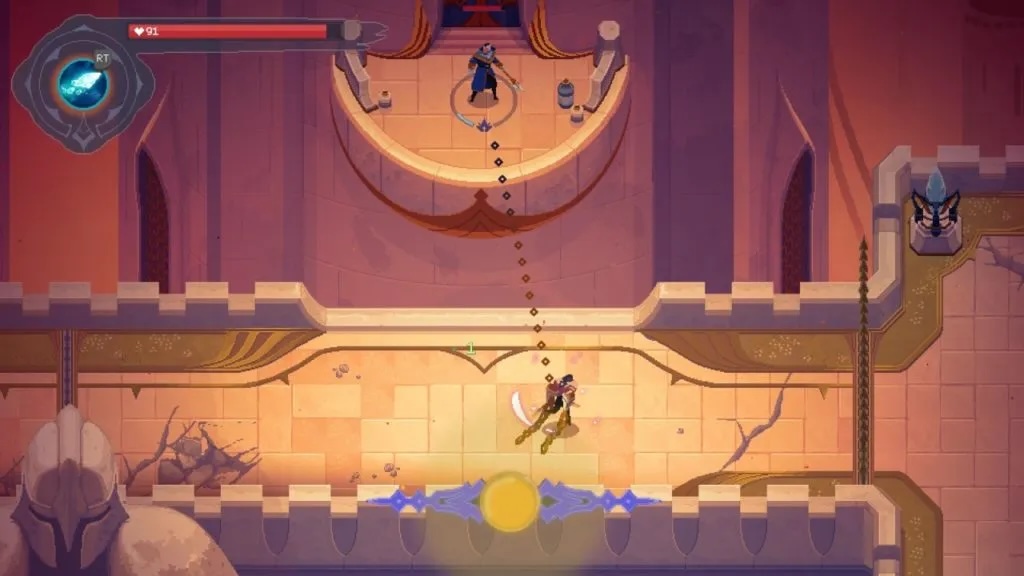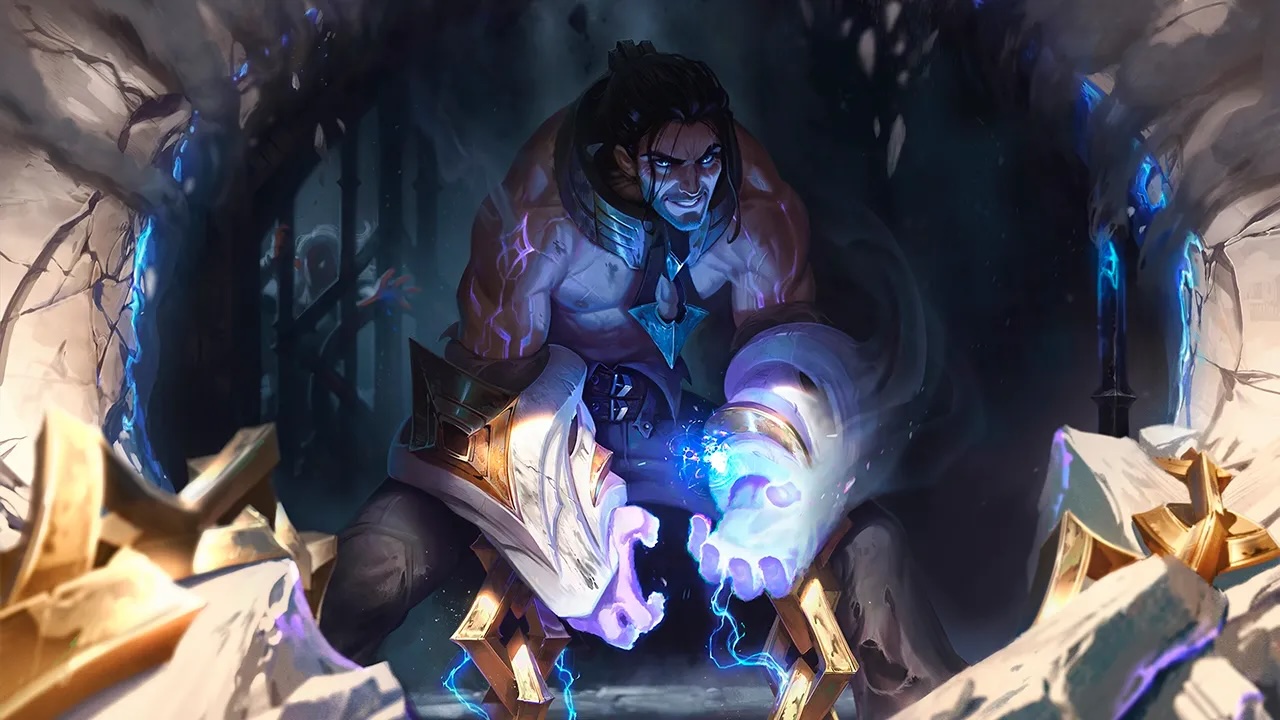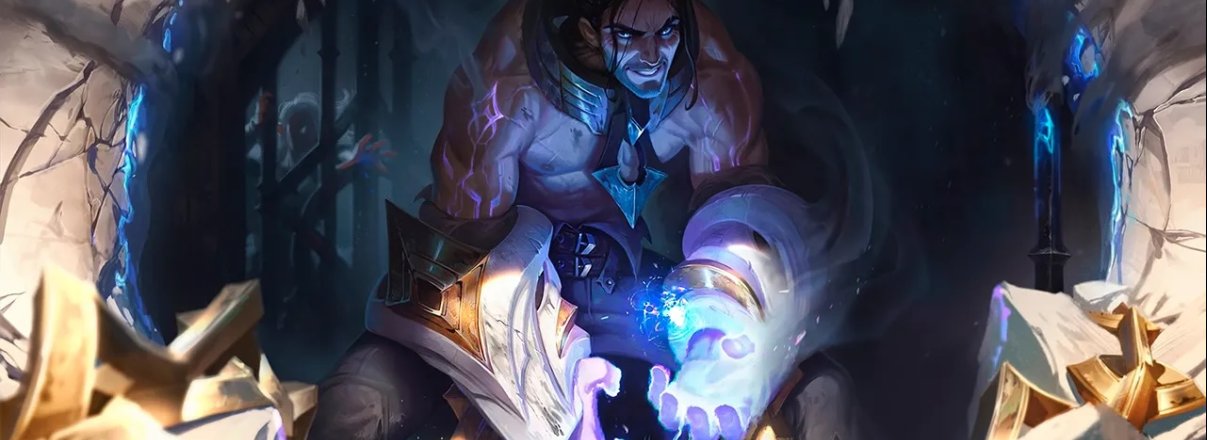The Mageseeker: A League of Legends Story (2023), developed by Digital Sun and published by Riot Forge, expands the lore of League of Legends into a pixel-art action RPG. Released for PC, PlayStation, Xbox, and Switch, it puts you in control of Sylas, a mage on a revenge-fueled revolution against the oppressive mageseekers of Demacia, who aim to imprison all mages in the country. While it doesn't always live up to its potential, it makes up for shortcomings with fluid, fun boss fights and a beautiful art style that somehow integrates intricate details and fluid animations with high resolution pixel art.

The story of The Mageseeker revolves around Sylas, a mage imprisoned for 15 years in Demacia, a kingdom created by refugees of a war fueled by magic. A few centuries later, the kingdom of Demacia still hunts down magic users religiously to contain them and make sure a similar war cannot happen again. After breaking free, Sylas leads a rebellion against his former captors. Sylas himself is a confounding character, but the supporting cast provides the depth and nuance he lacks. Characters like Lux, Jarvan IV, and Garen make appearances, each expanded beyond their roles in League of Legends.

Although the plot initially sets up interesting themes around persecution and redemption, it doesn't fully explore these ideas. Instead, the narrative settles into a simpler revenge arc. It's still engaging, especially for League fans, but it leaves you feeling like it could’ve done more.
Story is not necessarily Mageseeker's greatest strength. Sylas, our protagonist, feels relatively flat and dismissive when it comes to characters involved in his imprisonment. He could be deeper, but he doesn't necessarily need to be. As a newcomer to the canon, his design can feel a little confounding. He carries the chains he was imprisoned with everywhere he goes, something Sylas skins in League of Legends have to deal with and redesign in some way or another.
Combat in The Mageseeker is its standout feature. Sylas was imprisoned using a special material called petricite, which absorbs and dampens magic. After his breakout, he realized how to weaponize it, being able to absorb magic using the very chains he was imprisoned with. Sylas' chains let you steal magic from enemies and use it against them, which is the main mechanic in the game. The game's combat is easy to learn but offers enough depth to stay interesting through its roughly 15-hour campaign. Battles often feel like puzzles: the player is meant to identify enemy weaknesses, manage their mana, and strategically swap between magic types like fire, ice, wind, and nature.
Some of the magic pairings aren't intuitive. While fire versus ice makes sense immediately, pairs like wind and nature or mystic and storm are less clear. This sometimes forced me to pause and double-check weaknesses, slowing down combat that should feel intuitive.
Despite this, the fluidity and rhythm of dashing, stealing magic, and chaining combos keeps encounters pretty exciting. Boss battles, in particular, are challenging, varied and serve for a great spectacle.
Exploration in The Mageseeker is straightforward—sometimes a little too straightforward for my taste. Levels mainly involve moving between combat arenas with occasional hidden corners for collectibles, with Sylas jumping down from platform to platform in what ultimately feels like a bit of a railroad. You won't find much beyond linear paths, and there’s a notable absence of puzzles or meaningful side activities. It's a pure hack n' slash with bosses, almost comparable to Final Fight, even if it's clear Mageseeker wants to be more than that.

Side missions provide some variety but often reuse assets and enemies, which makes the experience feel very repetitive and recycled. More creative uses of Sylas’s unique abilities or interactive environments could’ve added depth and encouraged replayability.
While not bad, level design feels like a missed opportunity to expand on the interesting mechanics already present in combat.
Visually, The Mageseeker impresses with its detailed pixel-art graphics. Each character and enemy is animated beautifully, giving every fight a sense of weight and energy. Backgrounds are vibrant and detailed, capturing the atmosphere of Demacia's oppressive rule. Lighting and effects stand out too—spells explode with color, making combat feel alive.
Music and sound complement the visuals nicely, and the OST contains some good calm and tense songs. Full voice acting is rare, however, and the few snippets of voice audio are reused from League of Legends. It's less jarring if you haven't played the game, but the main intended audience is clearly League players that want to learn more about the lore. It's distracting at first, and quickly gets annoying.
A few bugs appeared during my playthrough, such as enemies becoming invincible or controls feeling like they were being eaten up. None of these were necessarily game-breaking, though.
The Mageseeker: A League of Legends Story is another successful spin-off from Riot Forge, giving players a fresh perspective on familiar champions. Its pixel-art visuals, excellent combat, and engaging characters carry the experience. However, limited exploration, repetitive side content, and underdeveloped story themes hold it back from being truly great.
League of Legends fans will appreciate the deeper look into Sylas and Demacia, while newcomers will find accessible gameplay and compelling action. If you're just getting into the universe and want to start fresh in the main game, grabbing a level 30 League account is a quick way to jump into ranked without the grind. Even though it misses a few opportunities, The Mageseeker remains an enjoyable journey through Runeterra, worth experiencing despite its flaws.


 Theatrhythm Final Bar Line
Theatrhythm Final Bar Line
 Unleash the Hero Within: Evercore Heroes Brings a Fresh Twist to RPG Gaming
Unleash the Hero Within: Evercore Heroes Brings a Fresh Twist to RPG Gaming
 From Hogwarts to the Horizon: The Newest Game Releases You Can’t Miss
From Hogwarts to the Horizon: The Newest Game Releases You Can’t Miss
